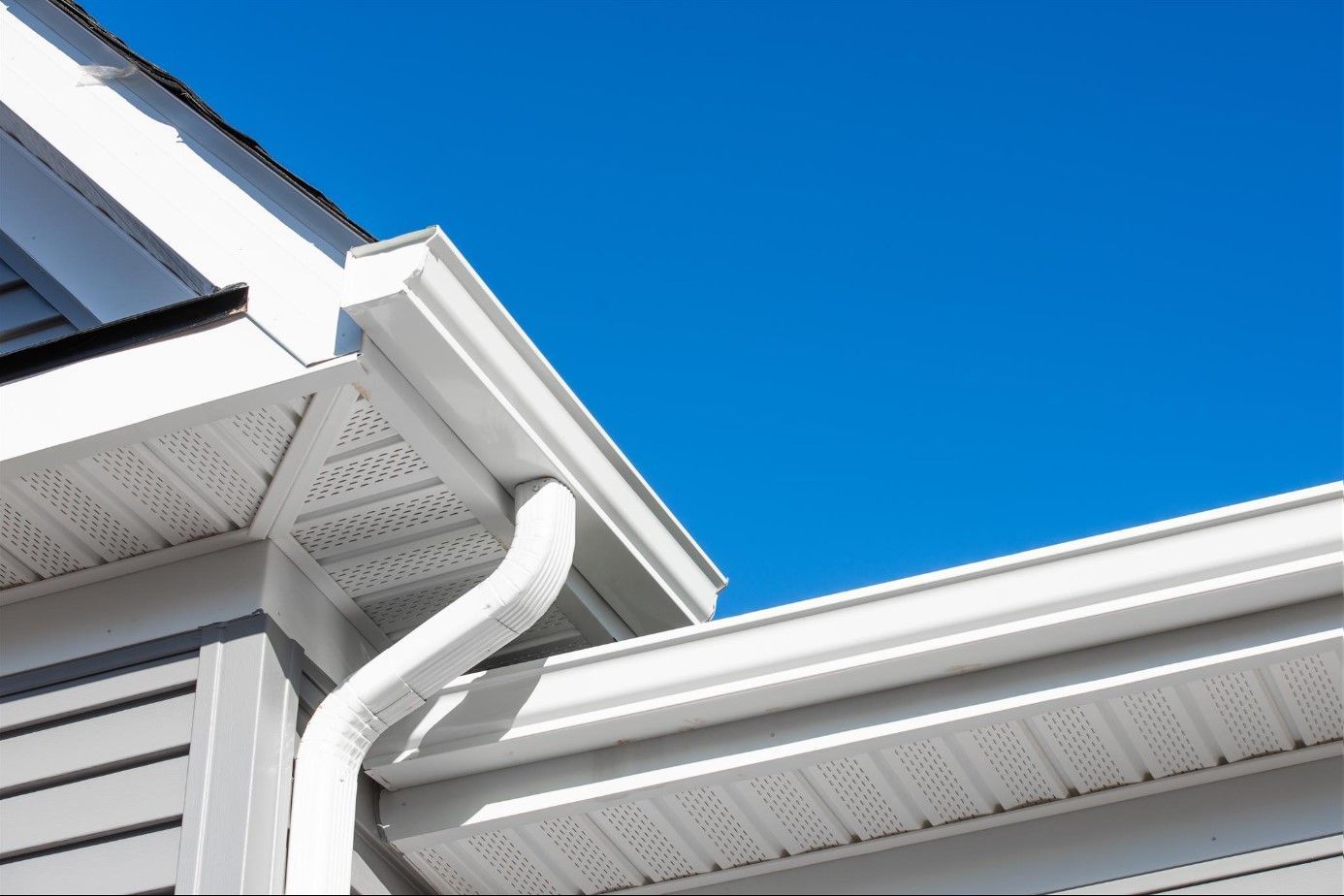Types of Gutters And How They Work

Calculating the proper sizes for the roof’s gutters and downspouts requires headache-causing mathematical calculations. Don’t be concerned. We can help you find your way to gutter glory. If you want to do your gutter sizing estimates, we’ll walk you through it.
The Basic Types of Gutters
Let’s begin with shapes. There are two primary forms. The shape of their cross-section distinguishes these forms. However, both varieties are available in 5- and 6-inch widths.
K-style gutters: They have smooth bottoms and backs, and the front side of the gutter typically has a decorative shape that mimics crown molding, such as a curve or ogee. There are several models to choose from.
Half-round gutters: These gutters are, as the name implies, half-round holes. You often see half-round gutters on smaller, historic houses.
Rain gutters: A gutter’s primary role is to provide a pathway for water to flow into. They are primarily intended to prevent flooding by directing water to a drain or protected location. Gutters have a small capacity and can overflow, but they still drain a significant amount of water efficiently. Rain gutters are typically made of aluminum, brass, or plastic and are attached to the roof.
The gutters on your roof collect rainwater as it runs off the side of your roof. This water is routed by downspouts and escapes away from your building. The gutter prevents deterioration of the ground against your home by redirecting rainwater and can significantly reduce the risk of basement flooding and foundation destruction. During dry weather, the downspout can empty into a tank or barrel for garden use. You can make residential gutters from a variety of metals.
Copper
Copper does not rust. There is no need to paint; the patina can grow over time. It may require professional installation, and there’s a need for welding seams and joints. Copper may be expensive and is a material often used on high-end homes and architectural restorations.
Seamless Aluminum
You can build seamless (or continuous) aluminum gutters at the job site. A truck will pull up by your house with a spool of flat aluminum, and the fabricator uses a gutter-forming machine to custom build whatever gutter length is needed. You can not haul long gutters. Seamless gutters account for roughly 70% of all gutter installs. It eliminates several seams and reduces the likelihood of leakage. Few people opt for seamless aluminum since it is marginally more expensive than standard aluminum gutters.
Steel
While galvanized steel prevents corrosion, its lifespan is a concern. It can begin to rust after 5 to 10 years. There are several painting options available, so it is possible to paint it. Due to its heavy size, steel isn’t suitable for a DIYer. It can also be costly.
Vinyl
It is a lightweight and inexpensive material, making it ideal for do-it-yourselfers. There aren’t many shades to pick from, either. In addition, the UV rays from the sunshine will cause the color to fade. In extreme colds, the vinyl material tends to crack. Keep in mind that it would not support ladders put against them.
Zinc
Zinc is a long-lasting and durable material. There is no need to paint; the patina can grow over time. However, professional installation is required as you may need a welding machine to complete it. Zinc works excellently in restoring ancestral homes, too.
There are decorative options available, such as spiral patterns. The ability of your device determines the size and number of downspouts required. As a general rule, one downspout is needed for every 30 to 40 linear feet of gutter. Add further downspouts to your gutter system to expand its size.
How Much Gutter Do You Need
Calculating gutter sizes and capacities is a complicated brain-freeze equation that takes into account the scale and your roof’s slope, as well as the average monthly rainfall in your city. We recommend that you leave the measurements to a specialist.
You can’t go wrong with a 5-inch, K-style gutter for the most part. A 5-inch gutter is pretty standard and can withstand rainfall pretty much anywhere in the world.
A 6-inch gutter has about double the ability of a 5-inch gutter, but more oversized gutters risk being weighed down with ice in cold climates, which could weaken the gutter structure.
Roofs with little to no overhang cause water to spill from the roof to within a foot of the base, causing a slew of issues. Trenches can form where the water collects as a result of heavy rainfall. When drained by the earth, rainwater sticks near to the foundation, creating extensive degradation over time. During a flood, you may even have to walk across a waterfall while entering or leaving your house.
As a result, selecting the appropriate gutter design is critical. Most homeowners choose K-style gutters because they resemble crown molding and give a house a finished appearance. When it comes to color, go with one that either suits or coordinates with your trim, fascia, or siding.
The post Types of Gutters And How They Work appeared first on Quality Discount Roofing & Construction.






